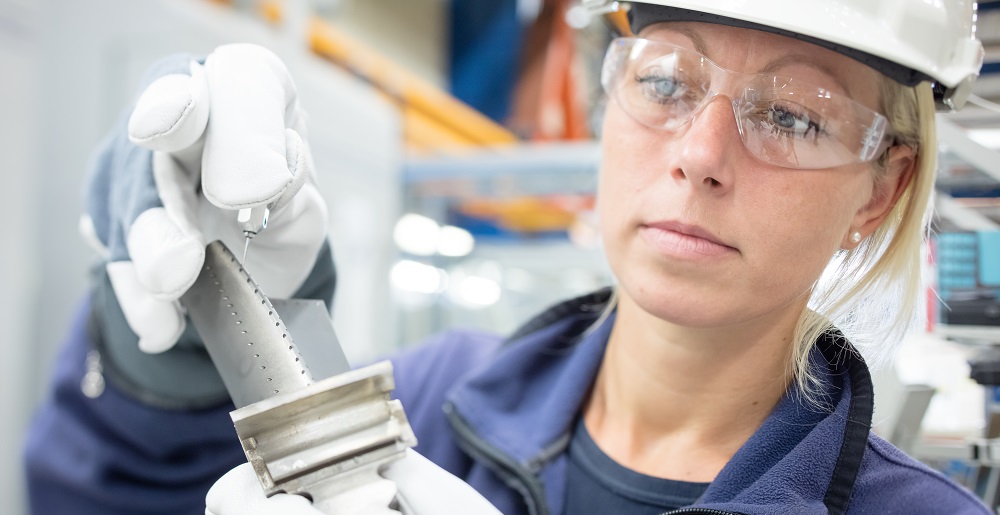Published article: Minimizing additive manufacturing build failures

In a recently published article in Additive Manufacturing Media, Brent Donaldson, Senior Editor, discusses how Siemens strives to control some of the most challenging variables within metal additive manufacturing (AM), including build orientation, distortion and deposition paths.

Additive manufacturing trial and error
Even with recent innovations in additive manufacturing (AM), trial-and-error plays a substantial role in achieving the anticipated features and tolerances of a part, thus hindering first-time-right printing. Metal powder bed fusion is complicated, containing multiple variables during the build process, so AM designers and engineers require robust tools to assist users in choosing ideal parameters for build orientation, support structures, distortions and deposition paths.
Siemens Digital Industries Software is striving to address these issues through a series of software simulation tools. The triple-solution toolset focuses on the metal printing process. This begins with the first solution called NX AM Build Optimizer which provides engineers with automation for determining the optimal print orientation and support structures for additive parts.
“There’s this large issue in the industry right now where people are struggling to get prints right, especially early in their additive adoption,” says Ashley Eckhoff, marketing manager of Siemens additive manufacturing software program. “There’s a long learning process that these customers go through, consistently gaining more knowledge about how their particular machines and various materials work, and they’re trying to distill all of that down into a series of processes that increase the odds of getting a quality print.”
AM Build Optimizer’s cloud-based, CAD-agnostic solution optimizes build orientation and support structures to further first time-right printing. It attempts to simulate the powder bed fusion build process with computationally efficient models of the build chamber’s thermal effects. This includes the immediate mechanical effects from the build process and the residual stresses within the part during heating and cooling. It also uses heuristic algorithms that allow the user to minimize build time, support volume and provide post-processing efforts. These core capabilities take much of the guesswork out of the metal additive process.
The second solution, Simcenter 3D AM, uniquely combines system simulation, 3D CAE and test to help predict deposition performance throughout the print process. By combining physics-based simulations with knowledge from data analytics, Simcenter 3D AM identifies and compensates for areas of overheating or distortion. In this process, the system performs a holistic analysis of everything within the build tray, including the residual powder, so that the entirety of the thermal map can be considered and analyzed before printing.
Lastly, the NX AM Path Optimizer tool analyzes how the deposition path can produce localized areas of overheating through the designed deposition path. This solution adjusts the deposition path to compensate for areas of local distortion and overheating and then passes the adjusted tool path to the machine, mitigating the issue and improving print quality.
Siemens Digital Industries Software drives the transformation to enable a digital enterprise where engineering, manufacturing and electronics design meet tomorrow. Xcelerator, the comprehensive and integrated portfolio of software and services from Siemens, helps companies of all sizes create and leverage a comprehensive digital twin that provides organizations with new insights, opportunities and automation levels to drive innovation. With Siemens Industry Software solutions you can industrialize additive manufacturing to design and print quality parts at scale.
Learn more in Brent Donaldson’s article.
Also, for more information on Siemens Digital Industries Software products and services, visit siemens.com/software or follow us on LinkedIn, Twitter, Facebook and Instagram.
Siemens Digital Industries Software
– Where today meets tomorrow.
About the experts
Brent Donaldson is senior editor for Additive Manufacturing Magazine and Modern Machine Shop, specializing in long-form feature articles related to machining and all-things-AM and industrial 3D printing.
Ashley Eckhoff has a background in engineering and has been with Siemens for over 20 years in various capacities. He has spent the past few years deep-diving into additive manufacturing in both product design and marketing roles.


